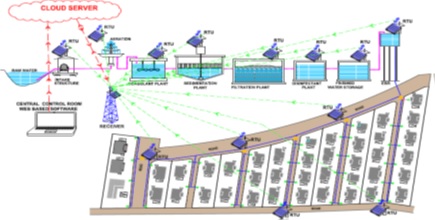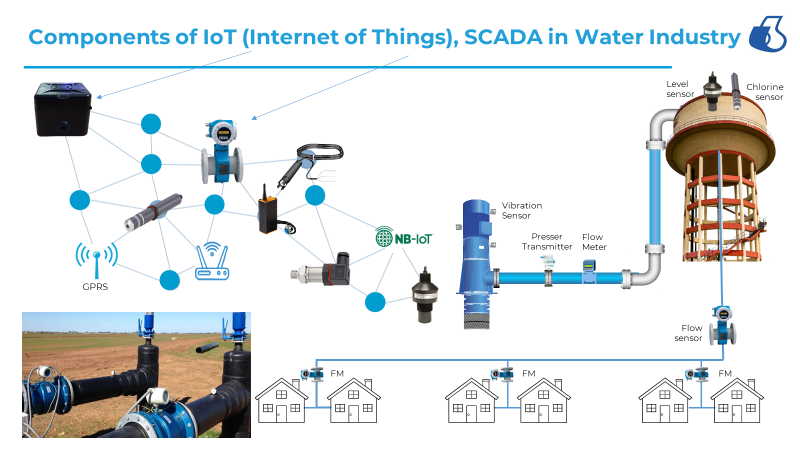Riddhish Chetan Soni, Karan Behar and Vikram Gulecha
Introduction Civil structures such as pipelines, roadways, and buildings ensure economic growth and prosperity in a society. In particular water supply pipe line networks ensure the distribution of potable water to all stakeholders within a community. These are subjected to deterioration over time leading to problems similar to as the reduced utilization of hydraulic installations, water losses, slowdown in industrial activities, and deteriorate water quality. Also the increasing consumer demand for water creates new problems similar to reduced water pressure at demand junctions. This raises the incoming water pressure of the water distribution system, which inturn increases the frequency of leakage. The common causes of pipeline leakages are shown in Table 1. Monitoring and mapping water leak locations have been a problem ever since the traditional methods of field surveys are not only expensive but also time consuming. In most cases, the leak can only be detected after a longtime, since water networks are often in accessible, along a network of the management operations and nonstop cost effective distribution of water resources within a water distribution system require an effective decision support strategy. Leak Detection Technology using Radar The radar technology originated during war is being applied throughout the globe. Radars used to monitor enemy missiles, have all weather, vegetation penetrating and ground penetrating capabilities, covering a broad range of microwave and radio wave electromagnetic spectrum. Satellite based synthetic radar can be used to detect ground objects and discriminate objects such as urban areas, water bodies and vegetation Project Jalashaya is a combined effort between Aumsat Technologies LLP, iSenses Incorporation Private Limited and Oceo Water Private Limited with a vision to bring down global non-revenue water pipeline losses by a tleast 25%. Project Jalashaya Jalashaya provides Precision driven, AI-enabled, Satellite-based hydroanalytics for detecting, predicting and forecasting pipeline water leaks. Unlike traditional costly and time consuming survey methods, we are able to provide water leak analytics without physically being present on the field thereby reducing the cost of water utilities by 80%. Jalashaya evaluates the dynamic interactions between land, water and air to determine the best possible spot for locating pipeline water leakages. We have unique features allowing clients to visualize interactive maps with simple, user friendly, digitally deliverable, remotely accessible analytics of different aspects of water leaks like the leak trend, location, flow, direction, area, etc. CaseStudy1: Victoria Docks, Mumbai, India In order to develop a proof of concept, we were able to detect the exact location of pipeline leak on16th February 2021 at Victoria Dock, Mumbai. The results matched the findings of the ground action team of Brihanmumbai Municipal Corporation. Case Study2: Dunean Road, Singapore Pipeline leaks are strictly monitored by the Public Utilities Board in Singapore using acoustic, sensors, IoT sensors, listening sticks and noise loggers. Nevertheless, leaks were detected on 20th September 2019 due to construction activities. Jalashaya was able to detect the position, size and dimension of the leakage using remote sensing observations. Conclusion Population, urbanization, and water scarcity are on the rise again and Climate Change continues to affect millions of people today. Public investment in water management requires much greater support and increased investment in water infrastructure. Incorporating our solutions into the system would improve basic socio-economic and water demand and supply by enabling an equitable distribution of water resources due to more accurate water pipeline leakage forecasts and more precise assessment of Non-revenue water losses. Benefits of Space Remote Monitoring: 8 Synoptic view of an entire water system in a single screening. 8 Minute leakages of 0.1liters per minute are detectable. 8 Inter operable solution with existing SCADA system. 8 40 years of satellite data available for leak detection model analysis, validation and data archival. 8 No Capex cost associated with Jalashaya program. No replacement to existing infrastructure required digitally delivered remote solution. 8 Jalashaya program is most effective at reducing NRW, both economically and logistically.





